- Register
- Log in to Tune-In
- Wishlist (0)
-
Shopping cart
(0)
You have no items in your shopping cart.
Beatles News

Henry McCullough has died aged 72. Paul McCartney paid tribute to the Northern Irish musician who also toured with Jimi Hendrix and Pink Floyd and played lead guitar on the orginal Jesus Christ Superstar rock opera.
The musician survived a serious heart attack in November, 2012, and his death had been mistakenly reported two months later. He never fully recovered and died at home this morning.
McCullough is most famous for playing on the huge Wings hit Live And Let Die with McCartney's band Wings. McCartney said he was "very sad" on hearing the news. The Beatles legend added: "He was a pleasure to work with, a super talented musician with a lovely sense of humour. "The solo he played on My Love was a classic that he made up on the spot in front of a live orchestra. Our deepest sympathies from my family to his."
My Love was No1 hit in the US. As well as playing on some of Wings' biggest hits, McCullough toured with the band throughout the early 1970s. The session guitarist also played with other music legends, including Jimi Hendrix and Pink Floyd. Van Morrison also paid tribute, saying: "I know he had some difficult times recently, but he will be remembered for his long and productive career in music. "M details

Ringo Starr, who spreads a message of peace and love every year on his birthday in July, said he wants that message to hit home even harder this year in the wake of Sunday's Orlando shooting.
Starr said in an interview Monday that he doesn't understand the attack that left 49 victims dead and more than 50 hurt.
"I don't understand that mindset that you could decide to injure and kill a lot of innocent people. I'm really not a supporter of wars either, but you can understand there's two sides having a go at each other. But this is so random," Starr told The Associated Press.
"It's a difficult situation because it just happens," he continued. "Some guy — so far it's always some guy isn't it, not some girl — gets up in the morning and maybe is mad, maybe is angry — we don't know, I don't know — and decides to cause a lot of hurt, you know. It's sad."
Starr says that's why his message of peace and love is so important. At noon on July 7 — his 76th birthday — the former Beatle is asking everyone to take a moment to ask for peace and love.
He's been holding the event since 2008 and has celebrated in New York, Chicago, Los Angeles, Nashville, Tennessee, Hambur details

Paul McCartney has discussed his creative process in depth in a new interview, where he's also revealed just much he misses working with John Lennon.
The legendary songwriter opened up about his past and present methods of writing music, as well as the varying levels of confidence he has in his own ability. McCartney, who released a new box set, 'Pure McCartney', today, gave a candid assessment of his experiences of songwriting over his long and prestigious musical career.
In this new interview with NPR for their All Songs +1 podcast, McCartney said that, with songwriting, "You never get it down. I don't know how to do this. You'd think I do, but it's not one of these things you ever really know how to do."
He also opened up about missing John Lennon in a creative sense, saying that he hasn't changed his method of songwriting since he first devised it with his fellow Beatle. "If I was to sit down and write a song now, I'd use my usual method: I'd either sit down with a guitar or at the piano and just look for melodies, chord shapes, musical phrases, some words, a thought just to get started with," McCartney said. "And then I just sit with it to work it out, like I'm writing an essay or doing a crossword details
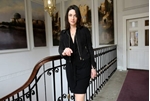
If all that wasn't enough, Sir Paul McCartney's daughter is also proud to be vegetarian - and even prouder that her pioneering mum Linda started her own veggie food range when such things were unheard of.
A quarter of a century later, Linda McCartney Foods (LMF) is a major part of a burgeoning UK vegetarian food market that has almost quadrupled since the range was launched.
Mary is rightfully proud of Linda's achievements, and the way she shared her environmentally-friendly ethos with her family and brought vegetarian diets to the wider public. Since LMF launched in 1991, the number of vegetarians in the UK has doubled, from 6% of the population to 12%. "She didn't even realise what a food revolutionary she was," says Mary proudly. "Vegetarian food ranges are quite mainstream now, but when she started, it was completely unheard of to have a range like that. I think we're all quite proud of it, and we want to work to ensure it carries on her ethics."
Along with being a successful photographer and writing vegetarian cookbooks, strong ethics are something else Mary (46), shares with her mum, who died from breast cancer in 1998.
She explains that her fundamental reasons for championing a meat-f details
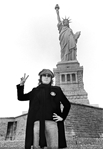
Who knows what Strom Thurmond had against the Beatles, but the senator from South Carolina certainly knew how to make John Lennon’s life miserable. On Feb. 4, 1972, the 69-year-old, anti–Civil Rights agitator wrote a few lines to Attorney General John Mitchell and President Richard Nixon’s aide, William Timmons, which would end up threatening Lennon with deportation and entangling him in legal limbo for almost four years.
In reality, while Lennon, then 31, spoke his mind about many political issues, he always felt that, as a British citizen, he shouldn’t endorse or attack individual U.S. candidates, says his friend, photographer Bob Gruen. Lennon and his wife Yoko Ono strove never to be negative. “They weren’t anti-war. They were pro-peace,” Gruen says. “They weren’t against a politician, they were for voting.”“This appears to me to be an important matter, and I think it would be well for it to be considered at the highest level,” Thurmond wrote. “As I can see, many headaches might be avoided if appropriate action can be taken in time.”
Thurmond attached a one-page Senate Internal Security Subcommittee report explaining that Lenn details
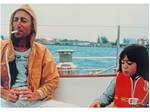
On the eve of making their first big festival appearance at Bonnaroo, The Claypool Lennon Delirium are defining what it means to be a psychedelic pop-rock band in the modern age.
Just within the last week, The Claypool Lennon Delirium released their debut album, Monolith of Phobos, which consists of a fusion of retro and modern psych-rock sound while also commenting on the condition of our society.
You might notice a familiar name with this band, and you’re absolutely right, this band has a Lennon as one of the frontmen, Sean Lennon. He is the son of legendary musician and Beatle member John Lennon, and Yoko Ono. The other half of the duo, Les Claypool, is a musician with an eclectic background, most notably being the lead singer of the band, Primus. Having the Lennon name has definitely helped The Claypool Lennon Delirium gain popularity quickly. However, Sean Lennon has truly made a name for himself over the years for integrating his talent and experimentation into the modern psych-pop world, especially on Monolith of Phobos.
The album features the vocals of both Claypool and Lennon, however Claypool plays bass, and Lennon plays the lead guitar. It’s easy to tell when Lennon is singing beca details
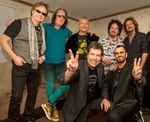
Fifty years after the Beatles permanently retired from the road, Ringo Starr can't seem to get enough of it. On June 3rd, the perpetually youthful stickman launched a month-long summer tour across North America with his All-Starr Band. Starr has eschewed arenas for more intimate venues, giving the gigs the informal feel of a Liverpool rave-up. "I love these old theaters," he told Rolling Stone during a sitdown at the historic Capitol Theatre in Port Chester, New York. "Mainly because I can see everybody!"
That certainly wasn't the case with the Beatles' final live performances, which saw the foursome relegated to enormous stadiums where audience synergy was all but impossible. This detachment was a major factor in their decision to quit touring, but reestablishing the link with his first All-Starr Band in 1989 has had a restorative effect on Starr. "I play because this is what I do," he says. "I love to play, and I'm still playing. I'm playing with great musicians, singers, and writers. So, I'm blessed I'm still doing it, really."
His current band, the 12th and longest serving line-up of the All-Starrs, boasts luminaries including power-pop wizard Todd Rundgren, Toto's Steve Lukather, Richard Page of Mr. M details

Musician and environmentalist Julian Lennon is going to be a children's book author. The son of Beatles musician John Lennon and Cynthia Lennon has signed a deal with Sky Pony Press to co-author three bedtime story books with Bart Davis and an as-yet-unnamed illustrator between now and 2019. The first will be released on Earth Day in April 2017.
Titled Touch The Earth, it is inspired by Lennon's 2007 documentary film, Whaledreamers, which debuted at the Cannes Film Festival and tells the story of an aboriginal tribe in Australia's relationship to whales. It won eight international film festival awards.
Lennon is the creator of The White Feather Foundation, which raise funds for the betterment of all life in areas such as clean water, environment, education and health and protection of indigenous cultures. The books, aimed at three to six year olds, will feature content that supports these ideals.
Touch The Earth is said to be an interactive concept that's "one part story, one part journey, and one part pledge to make the world a better, cleaner place" that will "inspire readers and their grownups to discover new features each time they read the book."
Lennon says the book will hopefully also prov details
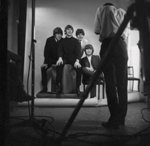
Paul McCartney is stepping back in time, being reunited with his former Beatles bandmates, via Virtual Reality, while he describes their very first encounters.
Sir Paul describes the early days with his friend and songwriting partner John Lennon, when they were just “two guys walking in Liverpool with guitars on our backs, dreaming of the future, whatever it might be, hoping that someone might actually listen to our songs”.
Sir Paul is in clearly reflective mood, saying he has “beautiful memories of those early times”. This halcyon chapter in the Beatles’ lives serves as contrast to the later difficulties experienced by the superstar bandmates, when they broke up and Paul turned to drink to deal with the sadness of it all, as he revealed recently.
The songwriter has filmed these virtual reality videos as part of the upcoming launch of ‘PURE McCartney’, a career-spanning compilation album, each of these VR experiences delve into the stories behind some of Paul’s most iconic songs.
By: Caroline Frost
Source: Huffington Post
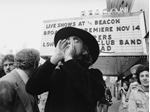
"Walls and Bridges" may not be as primal as "Plastic Ono Band" or as beloved as "Imagine," but it presents an older, somewhat wiser John Lennon during an important chapter of his life.
Of all The Beatles, John Lennon released the fewest solo albums.
A part of that was the five-year hiatus he took from 1975-80, a time during which he raised his second son, Sean. Another part of that, obviously, is the sad and senseless murder on Dec. 8, 1980.
In the 10 studio albums Lennon released without The Beatles (including the 1968 and 1969 experimental albums "Unfinished Music No. 1: Two Virgins," "Unfinished Music No. 2: Life with the Lions" and "Wedding Albums") during his lifetime, Lennon recorded a number of striking and memorable songs.
His solo albums could be mixed affairs. As much as I treasure "Plastic Ono Band" and "Imagine," I find "Some Time in New York City" and "Mind Games" to be uneven records, featuring great songs and sounds but also riddled with substandard filler (the three-second silent track "Nutopian International Anthem" may have been an artistic statement or a laugh, but either way ...).
By: Chris Shields
Source:St. Cloud Times
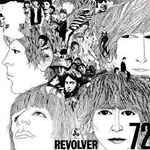
Which is more overrated: Sgt. Pepper’s or The White Album?
Okay yes but hear me out.
First of all Sgt. Pepper’s Lonely Hearts Club Band is a masterpiece. It’s a work of art and when paired with Strawberry Fields Forever and Penny Lane (the single released in advance of the album that George Martin regretted not hanging onto and including in the LP) there’s little that exceeds it.
The album was designed with two basic ideas in mind. First, the band had quit touring a year prior (right around the time Revolver was released) and, suddenly free to focus solely on their writing, arranging and their ever-evolving style, the Beatles had the idea to make their next album a sort-of “show on the road” experience. So they created a fake band name (inspired by the underground hippy bands of California) and designed the title track to feature a rousing crowd in the background. In addition they limited the space in between each track considerably, so that each song moved quickly from one to the next, giving the whole record the feel of a live album. It was one of rock’s first “concept” albums and a brilliant little concept at that.
It was also the second id details
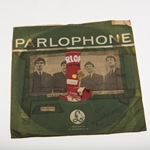
RARE Beatles memorabilia collected by a fan during the 1960s is to be sold at auction later this month. The lots – including signed photographs, early edition singles and a personal letter from Paul McCartney – are included in Thomas Watsons’ Summer Antiques Catalogue Sale, which takes place on Tuesday, June 21 at their Darlington saleroom. Among the items is a typed personal letter from Paul McCartney written from his Liverpool address in the early days of the band’s rising popularity.
It starts “Dear Jean” and is signed “Love, Paul McCartney xxx” and contains chatty phrases such as “nice to hear from you”, “cheerio” and “good luck”. The single sheet of paper is expected to fetch between £800 and £1,200.
There are also several photographs, including one from a Beatles’ performance at the legendary Cavern Club in the early 1960s and a television appearance by the group – again both signed and personalised by Paul McCartney. These carry guide prices of £150 to £250.
“The Beatles are arguably the biggest and most influential band of all times and they still have a huge and loyal fol details
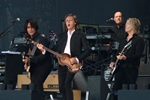
"It's like the Bob Dylan thing, isn't it? The 'Neverending Tour,'" Paul McCartney says with casual good cheer, chatting over the phone between show dates. This is how he likes the road these days, a few months on, a few months off. Last year was his 27-date Out There Tour, and now he's traveling the U.S. for One on One, playing marathon sets of solo songs and Beatles classics.
"You're putting a few new numbers in, changing the presentation a little bit, just so anyone who saw that tour and wants to come to this one isn't bored," he says. "We just switch it up and make some changes. Then you're allowed to call it something else."
McCartney and his band will be on the road through the summer and early fall, closing with two Saturdays in Indio, California, on October 8th and 15th as part of Desert Trip, the classic-rock cousin to Coachella. His current touring pattern was initially forced on him during a custody battle over his youngest daughter, Beatrice Milly, requiring him to be close to home. He could only schedule brief runs of concerts on the road.
"That actually turned out to be great because it meant that you'd get this time off," he says, "which would then leave you kind of hungry to get back details

When the Beatles made their U.S. television debut on Ed Sullivan’s show in 1964, Diane Soule was screaming at her television screen along with young women across the nation.
Her bedroom was plastered with their pictures, like tens of thousands of other bedrooms around the world. Like millions of other teenage girls in the 1960s, she fantasized about marrying a Beatle — she was a “Paul girl” — or at least being his girlfriend.
In many ways, Soule was and is a typical Beatles fan. But in one important way, she is different from most: She met them. “It’s hard to believe that was 50 years ago, to me,” said Soule, a retired fifth-grade teacher who lives in Rangeley.
Soule was 15 on Aug. 18, 1966, when she skipped school with a friend with the intention of spending the day at Suffolk Downs in Boston to see the Beatles play there that evening. A piece of inside information from the friend’s uncle, a Boston police officer, would change their lives: He said the band was staying at the Somerset Hotel, not the Exeter as everyone had been told.
Even though the hotel’s doorman told them the band wasn’t there, Soule and her friend persisted unti details
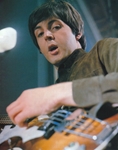
On 4 December 1965, the Beatles appeared at Newcastle-on-Tyne’s City Hall during what would be their last ever British tour. I was a 22-year-old reporter in the Newcastle office of the Northern Echo. Orders from my newsdesk were: “Go along and try to get a word with them.”
I set out on the assignment with zero hope. This tour came in the wake of their Rubber Soul album, their second smash-hit film Help!, their performance to 55,000 people at New York’s Shea Stadium and their investiture as MBEs by the Queen. I’d be competing not only with Tyneside’s own heavyweight media but also the national newspapers and broadcasters who had offices there. Even if I got close to them, why would they waste a second on some nobody from the Northern Echo?
A few minutes before showtime, I was loitering backstage among a crowd of other would-be interviewers, including my friend Dave Watts from the Echo’s evening stablemate, the Northern Despatch. In those more innocent days, the Beatles’ dressing room was without any security protection, yet no one dared knock on the door, let alone barge in.
Then suddenly Paul McCartney came along the passage. As he opened the dressing-room details
